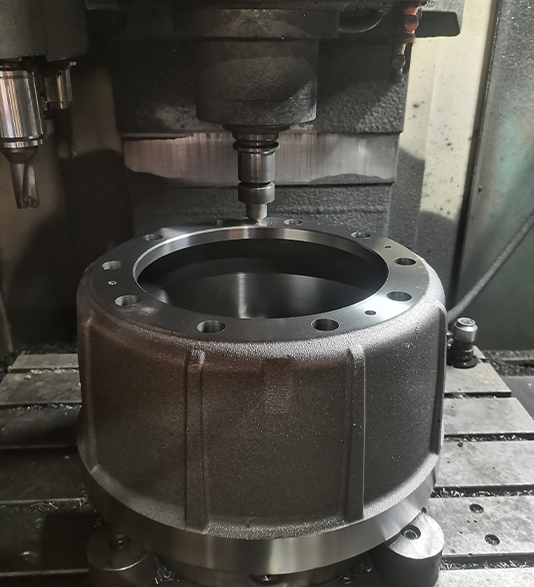Nov . 07, 2024 18:08 Back to list
Tips for Spraying Brake Drums with Paint for a Professional Finish
The Art of Spraying Brake Drums A Guide to Aesthetic and Functional Enhancement
When it comes to automotive customization, enthusiasts often focus on performance upgrades and flashy exterior mods. However, one area that often gets overlooked is the brake system—specifically, the brake drums. While brake drums serve a crucial function in the braking system, they can also become an unexpected canvas for creative expression through spray paint. In this article, we will explore the process of spray painting brake drums, including the benefits, preparation techniques, and tips for achieving a professional finish.
Understanding Brake Drums
Before diving into the painting process, it's essential to understand what brake drums are and their role in a vehicle's braking system. Brake drums are part of drum brake systems, commonly used in older and some modern vehicles. When the brake pedal is pressed, brake shoes press against the inner surface of the drum, creating friction and slowing the vehicle. Typically made from cast iron or steel, these components are subject to wear and tear, rust, and corrosion, which can detract from a vehicle's overall appearance.
Benefits of Spray Painting Brake Drums
1. Aesthetic Appeal The most obvious benefit of spray painting brake drums is the enhancement of visual aesthetics. A clean, vibrant color can add a unique touch to your vehicle, making it stand out in a crowd.
2. Corrosion Resistance Painting brake drums can help protect against rust and corrosion by creating a barrier against moisture and debris. This added protection can extend the lifespan of your brake components.
3. Personal Expression For automotive enthusiasts, personal expression is key. Customizing your brake drums allows you to showcase your style and can be a conversation starter among fellow car lovers.
Preparation The Key to Success
Before you can begin spray painting your brake drums, proper preparation is vital
. Here’s a step-by-step guide to help you through the process1. Gather Materials You will need high-temperature spray paint suitable for automotive use, sandpaper or a wire brush, masking tape, clean rags, and a degreaser.
2. Safety First Ensure you are working in a well-ventilated area and wearing protective gear, including gloves and a mask. Spray paint emits fumes that can be harmful if inhaled.
3. Remove the Wheels To access your brake drums, you will need to remove the wheels. Use a jack to lift the vehicle and securely place it on jack stands.
spray paint brake drums

4. Clean the Brake Drums Using a degreaser, thoroughly clean the brake drums to remove dirt, grease, and any brake dust. This step is essential for ensuring proper adhesion of the paint.
5. Sand the Surface Once clean, lightly sand the surface of the brake drums using sandpaper or a wire brush. This roughens the surface, allowing the paint to stick better.
6. Mask Off Areas Use masking tape to cover areas you do not want painted, such as brake components or adjacent surfaces. Precision in this step will lead to a cleaner paint job.
7. Prime the Drums If necessary, apply a high-temperature primer designed for metal surfaces, as this will enhance adhesion and durability.
Painting Process
Once your preparation is complete, it’s time to paint
1. Choose the Right Paint Select a high-quality, high-temperature spray paint in your desired color. Look for products designed specifically for automotive applications.
2. Apply Even Coats Hold the spray can about 6 to 12 inches away from the surface and spray in even, smooth strokes. It’s better to apply multiple light coats rather than a single heavy coat to avoid drips.
3. Allow to Dry After applying the final coat, allow the paint to dry as per the manufacturer’s recommendations. Ensure it is fully cured before reassembling everything.
4. Reassemble and Enjoy Once the paint has dried, carefully remove the masking tape, reattach the wheels, and lower the vehicle. Step back and admire your handiwork!
Conclusion
Spray painting brake drums might not be the first modification that comes to mind when upgrading your vehicle, but it can significantly enhance both aesthetics and functionality. With the right preparation, materials, and techniques, you can achieve impressive results that showcase your personal style while protecting vital components of your braking system. So, roll up your sleeves and give your brake drums the transformation they deserve!
-
Scania Brake Drums: OEM Quality for Optimal Safety & Durability
NewsAug.16,2025
-
R.V.I: Advanced Remote Visual Inspection for Precision
NewsAug.15,2025
-
Discover HYUNDA: Innovative Vehicles, Equipment & Solutions
NewsAug.14,2025
-
R.V.I: Unlock Advanced Insights & Real-time Performance
NewsAug.13,2025
-
Kamaz Brake Drum: Durable & Reliable for Heavy Duty Trucks
NewsAug.12,2025
-
Heavy Duty Iveco Brake Drum - Premium Quality & Safety
NewsAug.11,2025
